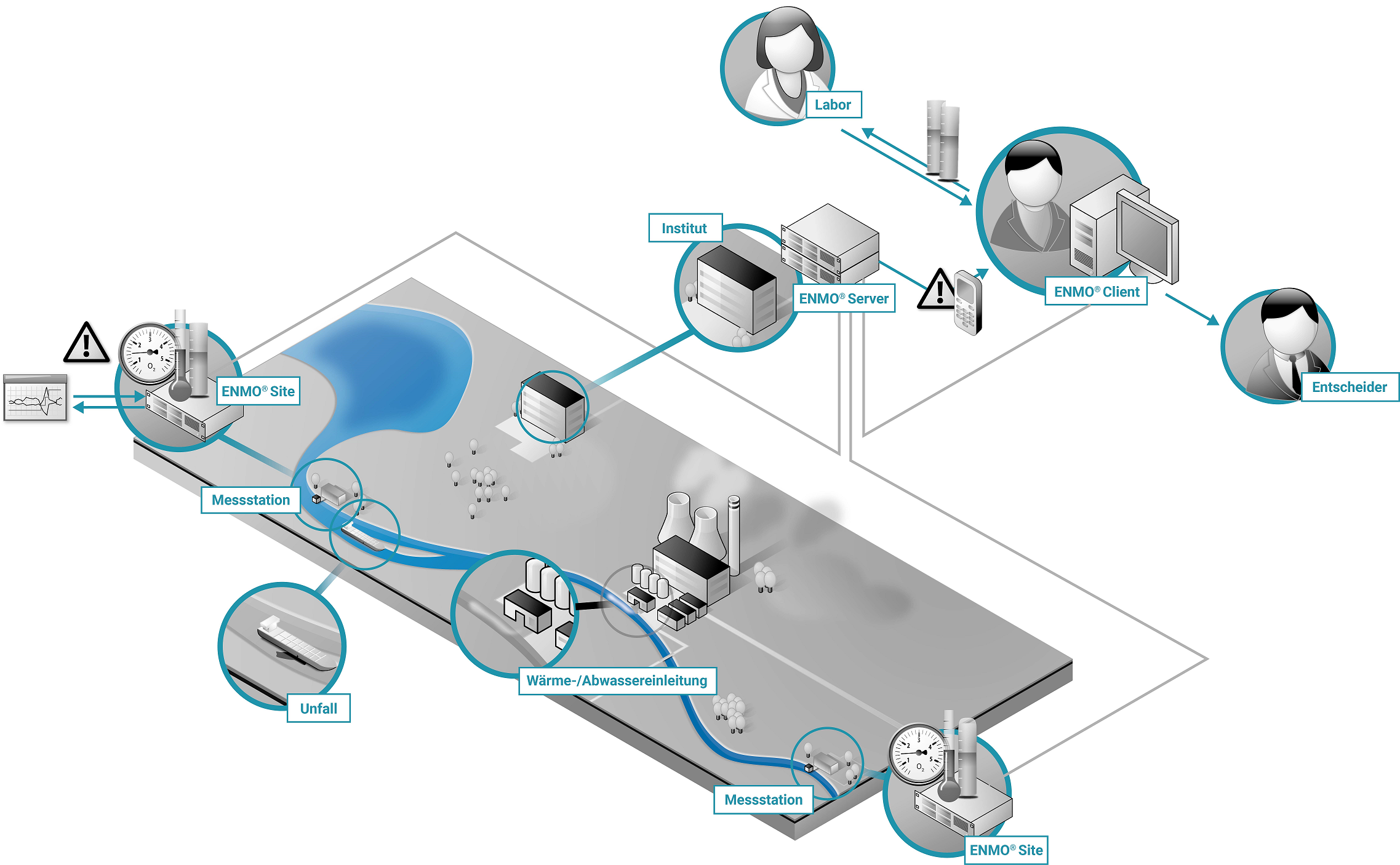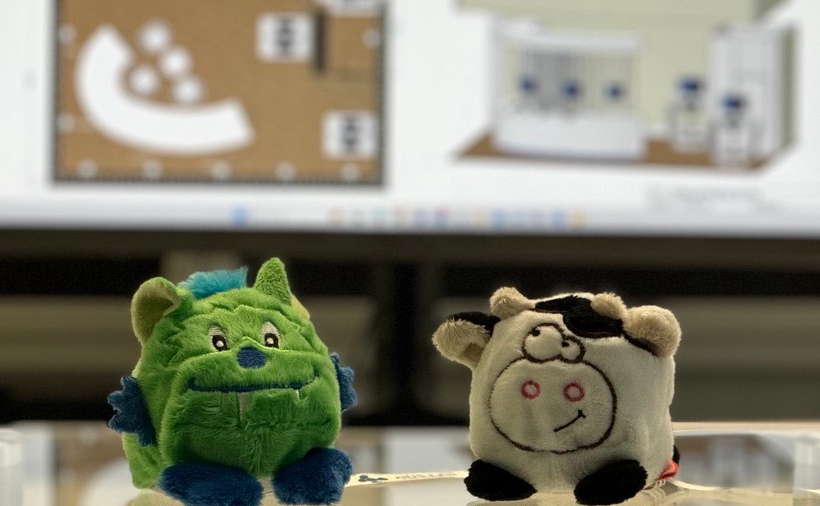
(Figure: Schematic representation of an example measuring network with the use of ENMOhydro. Source: Blomesystem GmbH)
In the light of the recent fish mortality on the Odra river, the need for continuous water monitoring - both nationally and across Europe - is once again evident.
Although not mandatory, the EU Water Framework Directive requires all necessary measures to prevent pollutant releases in water bodies. The use of early warning systems is becoming increasingly important, as it is not always possible to foresee and, if necessary, prevent catastrophic events (such as the above-mentioned fish kill) during regular water monitoring operations. The status monitoring of surface waters according to the Water Framework Directive or the Surface Water Ordinance (OGewV) is still carried out in many places on the basis of monthly or quarterly manual sampling and subsequent laboratory analysis. A comparison of the annual mean values with the annual average environmental quality standard (JD-UQN) subsequently provides an overview of the status of the water body. However, these values are often insufficient to identify the source of contamination when EQS are found to be exceeded. In such cases, the staff:inside the laboratory usually do not know in advance what to look for. In addition, some samples need to be prepared appropriately before analysis, which takes additional time.
In the case of the fish kill on the Oder River, the search for the cause was also difficult. The water flows; the pollutants are diluted and/or change, which makes the search even more difficult.
In these cases, a higher density of information is required to identify the causes in time and to initiate the necessary measures. This is where ENMOhydro comes in by working with immission-oriented alarm thresholds. Many actions can be automatically planned and/or triggered from the system as soon as a limit value (alarm threshold) has been exceeded: e.g. notification of those responsible or automated additional sampling using automatic samplers.
Continuous monitoring helps to identify potential threats at an early stage and to react accordingly.



